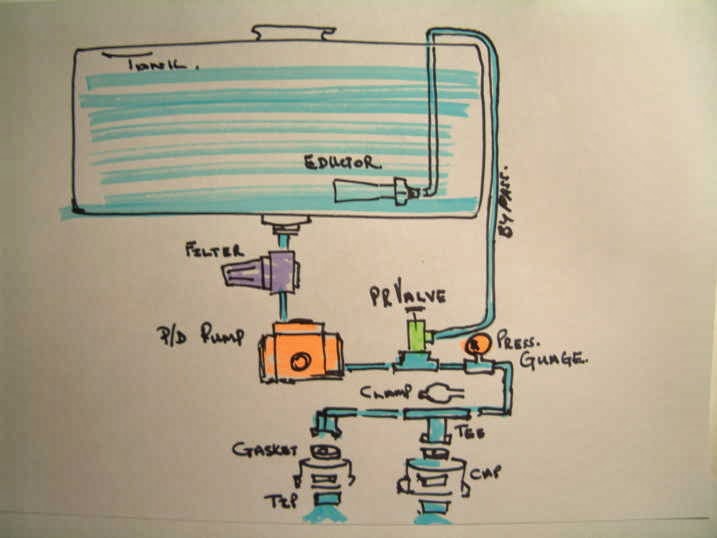Take a banknote and place it on a table. The downward pressure exerted by this note is supposed to be about one Pascal.
Pressure is the force per unit area. I’ll get back to Pascals in a moment but first…….
In the old days when most countries were using imperial units, the pressure at average sea level or standard pressure was equivalent to 14.7 pounds per square inch. So, while you’re lazing about on a beach there is an atmospheric pressure of 14.7 pounds being exerted on every square inch of your body. Think in terms of air molecules bouncing around and knocking onto you. While you’re at it think what happens to pressure the higher up we go. Fewer molecules bumping onto you.
Today most of us that can afford motorised transport are more familiar with the term
bar. No! Not to confused with the publican where you pop in for a drink or two. At a garage we either have to check tyre pressures ourselves or ask an attendant to check it. You may hear, “Two point three bar all round” or “Two up front and two point four at the rear.” Of course, if you had ask the motorist what bar means most wouldn’t have a clue.
1 Bar = 0.98692 of a standard atmosphere or 14.504 p.s.i. (pounds per square inch) How do we get from bar to Pascals? Getting back to that banknote we can see that 1’000 of these notes makes up a kiloPascal = 1kPa.
The important thing to remember is that 100 kiloPascals or 100 kPa’s = 1bar. Sounds like 100’000 banknotes to me.
GUAGE PRESSURE
Guage pressure is the pressure relative to the local atmospheric pressure.
Take a closer look at these guages. The one on the right indicates pressures up to 600 kPa or 6 bar. The bottom guage will measure relative pressures up to 4000 kPa or 40 bar while the top guage measures pressures in MPa or Megapascals.

Megapascals???? Just remember that 1MpA =10 bar. So this particular guage measures relative pressures up to 600 bar or 60’000 kPa. That’s alot of banknotes!
So what are the bubbles for? These guages are all filled with glycerine. The purpose is to merely stop the indicating needle from vibrating so that is easier to see the indicated pressure. Think in terms of pumps with pistons whizzing – valves bouncing around and you will understand why the needle will not stay still.
Before moving on to an example take a look at this image. The guage on the top right has a back entry. As a matter of interest the “rubber” plug is there to equalise the pressure in the guage with atmospheric pressure.

This guage shows a bottom entry. Let’s get back to the garage example. So now you can understand that there is already external atmospheric pressure being exerted
on the vehicle’s tyre so when filling the tyre to 2.3 bar or 230 kPa the guage is indicating relative pressure. At sea level you would have to add another 100kPa or 1 bar to get the absolute or “true pressure”. In our example the absolute pressure in the tyre will be 3.3 bar or 330 kPa.
If you have been following these posts then you now have most of the essential concepts to move onto more interesting aspects of

product application.

chemicon@multispray.com
TEL INTL +27 83 289 0327
TEL NATL 083 289 0327

 The fumigant is fed into the pipes
behind the tines on the implement and incorporated into the soil. It
is not sprayed into the soil under pressure. An orifice plate is
placed into each line to accurately meter the amount needed.
The fumigant is fed into the pipes
behind the tines on the implement and incorporated into the soil. It
is not sprayed into the soil under pressure. An orifice plate is
placed into each line to accurately meter the amount needed.













.jpg)





















